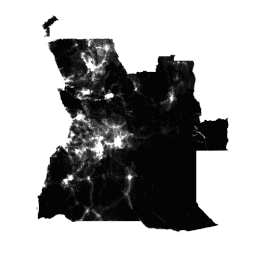
- Dostępność zbioru danych
- 2000-01-01T00:00:00Z–2021-01-01T00:00:00Z
- Dostawca zbioru danych
- WorldPop
- Tagi
Opis
Globalne dane o rozmieszczeniu ludności o wysokiej rozdzielczości i aktualności są niezbędne do dokładnego pomiaru wpływu wzrostu populacji, monitorowania zmian i planowania interwencji. Projekt WorldPop ma na celu zaspokojenie tych potrzeb poprzez udostępnianie szczegółowych i otwartych zbiorów danych o rozmieszczeniu ludności, które są tworzone przy użyciu przejrzystych i recenzowanych metod.
Szczegółowe informacje o metodach i zbiorach danych użytych do tworzenia danych oraz publikacje z otwartym dostępem znajdziesz na stronie WorldPop. W skrócie: ostatnie dane o liczbie ludności pochodzące ze spisu powszechnego, dopasowane do powiązanych z nimi jednostek administracyjnych, są rozdzielane na komórki siatki o wymiarach ok. 100 x 100 m za pomocą metod uczenia maszynowego, które wykorzystują relacje między gęstością zaludnienia a zakresem warstw zmiennych przestrzennych. Metoda mapowania to dasymetryczna redystrybucja oparta na lesie losowym.
Ten zbiór danych przedstawia szacunkową liczbę osób mieszkających w każdej komórce siatki w 2010 r., 2015 r. i innych latach.
W przypadku 2020 roku podział ludności według wieku i płci jest dostępny w kolekcjach WorldPop/GP/100m/pop_age_sex i WorldPop/GP/100m/pop_age_sex_cons_unadj.
Dalsze zbiory danych siatkowych WorldPop dotyczące struktur wiekowych populacji, ubóstwa, rozwoju miast i dynamiki populacji są dostępne bezpłatnie na stronie internetowej WorldPop. WorldPop to projekt, w którym uczestniczą badacze z University of Southampton, Universite Libre de Bruxelles i University of Louisville. Projekt jest finansowany głównie przez Fundację Billa i Melindy Gatesów.
Pasma
Rozmiar piksela
92,77 m
Pasma
| Nazwa | Minimum | Maks. | Rozmiar piksela | Opis |
|---|---|---|---|---|
population |
0* | 21171* | metry | Szacunkowa liczba osób mieszkających w każdej komórce siatki |
Właściwości obrazu
Właściwości obrazu
| Nazwa | Typ | Opis |
|---|---|---|
| kraj | CIĄG ZNAKÓW | Kraj |
| rok | LICZBA ZMIENNOPRZECINKOWA O PODWÓJNEJ PRECYZJI | Rok |
Warunki korzystania z usługi
Warunki korzystania z usługi
Zbiory danych WorldPop są objęte międzynarodową licencją Creative Commons Attribution 4.0. Użytkownicy mogą bez ograniczeń używać, kopiować, rozpowszechniać, przesyłać i adaptować utwór do celów komercyjnych i niekomercyjnych, pod warunkiem że podane zostanie wyraźne oznaczenie źródła.
Cytaty
Jako źródło podaj stronę WorldPop: www.worldpop.org.
Dane o populacji Ameryk: Alessandro Sorichetta, Graeme M. Hornby, Forrest R. Stevens, Andrea E. Gaughan, Catherine Linard, Andrew J. Tatem, 2015, High-resolution gridded population datasets for Latin America and the Caribbean in 2010, 2015, and 2020, Scientific Data, doi:10.1038/sdata.2015.45
Dane dotyczące liczby ludności w Afryce: Linard, C., Gilbert, M., Snow, R.W., Noor, A.M. i Tatem, A.J., 2012, Population distribution, settlement patterns and accessibility across Africa in 2010, PLoS ONE, 7(2): e31743.
Dane o liczbie ludności w Azji: Gaughan AE, Stevens FR, Linard C, Jia P i Tatem AJ, 2013, High resolution population distribution maps for Southeast Asia in 2010 and 2015, PLoS ONE, 8(2): e55882.
DOI
Odkrywanie za pomocą Earth Engine
Edytor kodu (JavaScript)
var dataset = ee.ImageCollection('WorldPop/GP/100m/pop'); var visualization = { bands: ['population'], min: 0.0, max: 50.0, palette: ['24126c', '1fff4f', 'd4ff50'] }; Map.setCenter(113.643, 34.769, 7); Map.addLayer(dataset, visualization, 'Population');
